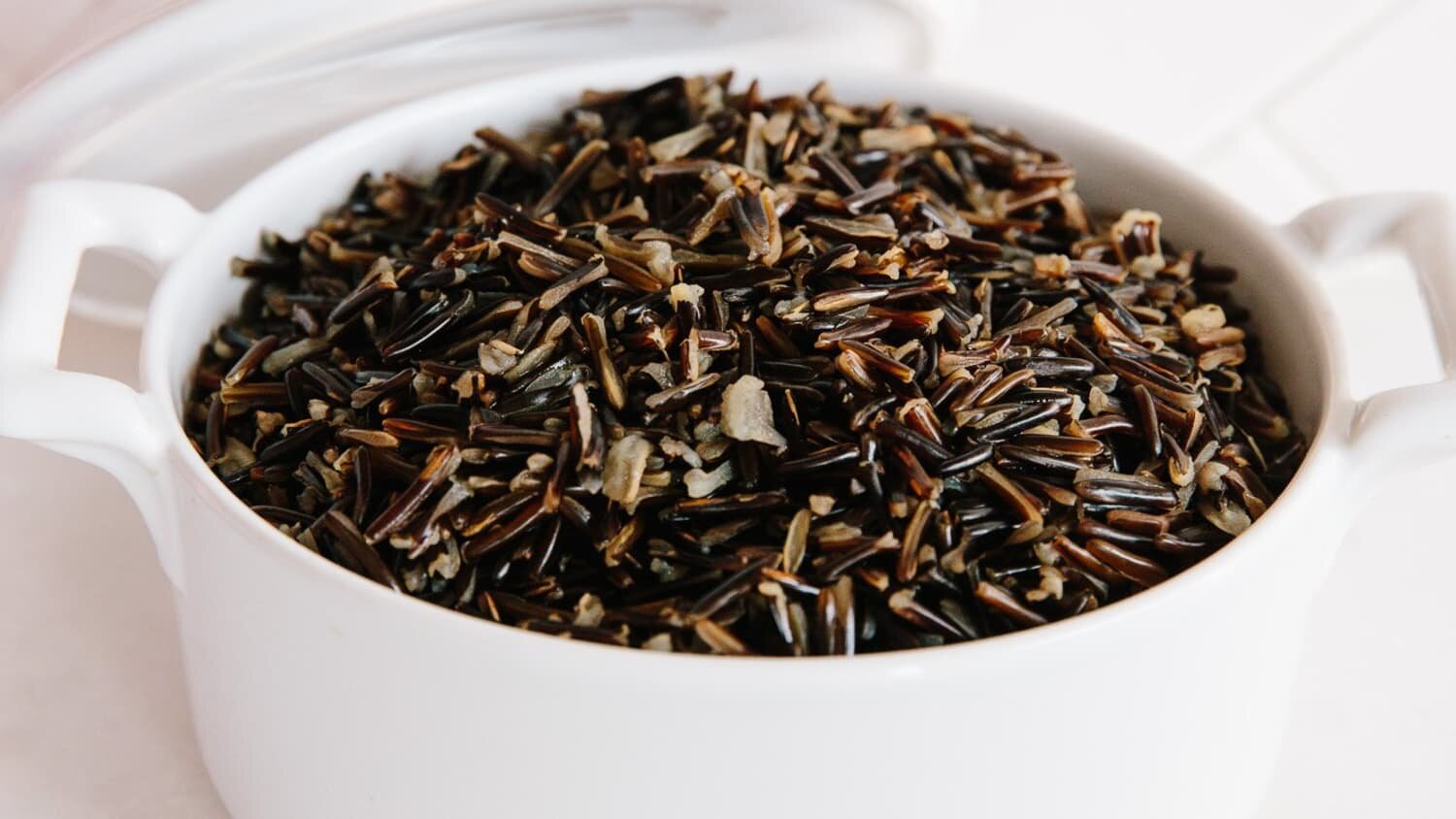Rice Made Simple
Not all rice is the same. In general, the whiter the rice, the less nutritionally dense it is. The darker varieties of rice (brown, red and black) contain the whole grain, which includes the fibrous brain, the nutritious germ, and the carb-rich endosperm. White rice is, processed and stripped of its nutritious content.
Not sure what rice is best for you and your meal? We broke it down for you:
From healthiest to least healthy:
BLACK (Forbidden) RICE
The healthiest of all rice due to its extremely high antioxidant properties. The deep rich color is produced by an antioxidant called anthocyanin, which is also found in blueberries and blackberries. Anthocyanin can restrict free radicals, which have been attributed to heart disease, diabetes, and even cancer. The antioxidant content of black rice is six times higher than any other grain and it reduces inflammation in the body better than any other type of rice. The main anti-inflammatory constituent in black rice is called C3G, which research shows may help combat diseases like arthritis, diabetes, heart disease and cancer. Of note, it earned its name as “Forbidden Rice” as it was once reserved for the Chinese emperor to ensure his health and longevity, and forbidden to anyone else!
WILD RICE
Botanically speaking, wild rice is grass, not rice. Wild rice contains an array of nutrients, including protein, manganese, phosphorus, magnesium, and zinc. These combined nutrients are vital to maintaining strong bones, muscles, ligaments, and healthy joints. Wild rice has 30 percent fewer calories than brown rice and offers 40% more protein. A serving of wild rice is lower in calories than other rice varieties.
BROWN RICE
Brown rice gets its color, flavor, and texture from the bran layers that remain on the rice when it goes through the hulling process. It retains the healthy bran layers because it’s milled for less time than white rice. There are four different types of brown rice — short grain, medium grain, long grain, and light brown. Each variety has similar health benefits but requires a different amount of times to cook. Brown rice is more nutritious, nuttier and chewier than white rice. Brown rice has 4 times more magnesium than white rice, a mineral crucial for heart, bone, muscle and brain health. Brown rice is a good source of thiamine, zinc and iron.
CAULIFLOWER RICE
Although not technically in the “rice” family, cauliflower rice has become a popular substitute. You can purchase it already made or easily prepare it yourself. While white rice typically contains less nutritional value than it’s darker counterparts, this rule doesn’t apply to white cauliflower “rice”. It’s very low calorie and offers almost every vitamin and mineral from A to Z! It’s loaded with healthy fiber, which is important for digestive health and helps to prevent colon cancer. Cauliflower is high in glucosinolates and isothiocyanates, two groups of antioxidants that have been shown to slow the growth of cancer cells. Cauliflower “rice” is a nice lighter substitute for rice and a great way to add another serving of vegetables into your meal.
RED RICE
Red rice is a variety of rice that is colored red by its anthocyanin content. This compound helps to reduce inflammation, allergies, prevents cancer and helps in weight management. Red rice contains manganese, which can help strengthen bones, reduce painful joints, aid in weight loss and reduce symptoms of premenstrual syndrome (PMS). Red rice also has a compound called monacolin K which can actually lower your LDL cholesterol, so, great choice for heart health!
BASMATI RICE
Basmati rice is highly valued for its fragrance as well as flavor. Basmati is a good source of niacin and thiamine. These two nutrients support a healthy nervous system and may aid in combatting depression and memory loss.
JASMINE RICE
Unlike plain white rice, which is stripped of most nutrients, jasmine rice contains iron and niacin, which helps aid in the production of red blood cells in the body and converts carbohydrates to glucose for energy.
ARBORIO RICE
Grown only in Italy, Arborio rices’ high starch content is what makes risotto dishes creamy and delicious. Although Arborio rice protein ( 9 grams per serving) and fat, almost 90 percent of the calories in the rice comes from its carbohydrate content. It offers vitamin A, C, and iron. Arborio rice is not the best choice for weight loss because it is starchier than any other rice and higher in calories than other rice.
WHITE RICE
White rice is a refined carbohydrate, similar to those found in white bread, flour tortillas, and many breakfast cereals. The husk, bran layer and the germ are removed. As a result of this extraction, white rice doesn’t offer the vitamins and minerals that brown, black and red varieties do. To be considered a “whole grain rice,” it must include all three layers. White rice is stripped down to the endosperm, which contains mostly carbohydrate and a little protein. Because white rice has “empty calories,” void of nutrients, it gets digested quickly and is rapidly processed into sugar. This leaves us hungry shortly after eating it. In comparison, brown rice is processed slowly, churning out a steady stream of fuel to power our bodies. The more whole grain foods we consume (like whole-wheat and brown rice), the less likely we are to gain weight.
STICKY RICE
Sticky rice is also called “glutinous rice,” but does not contain gluten. Glutinous rice gets its sticky texture from high amylopectin (a type of starch) content. When activated by hot water, amylopectin breaks down easily. Sticky rice has negligible amounts of nutrients and is not a good source of fiber, vitamins or minerals. Short grain brown rice is a great alternative to recipes that call for sticky rice!










